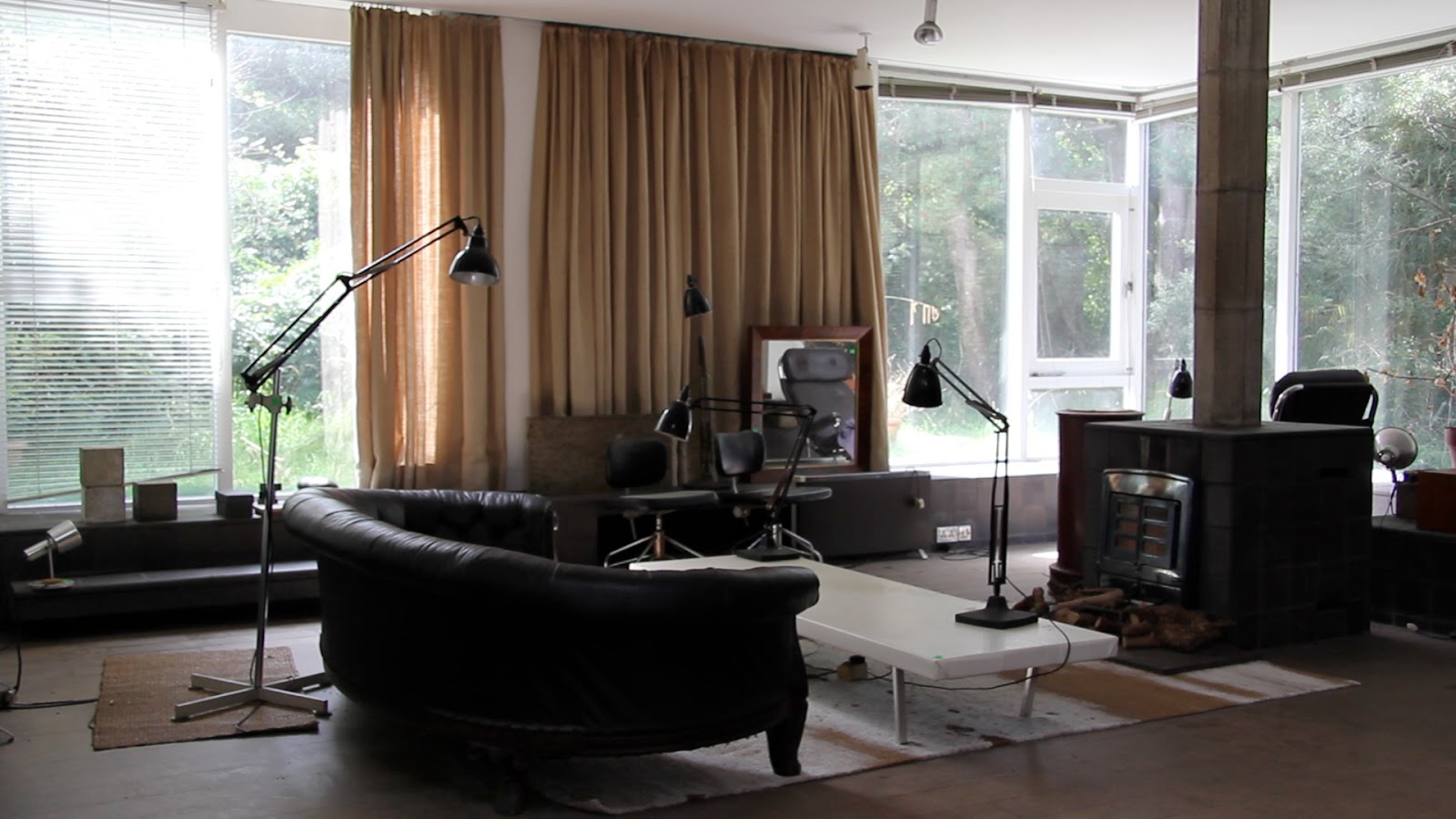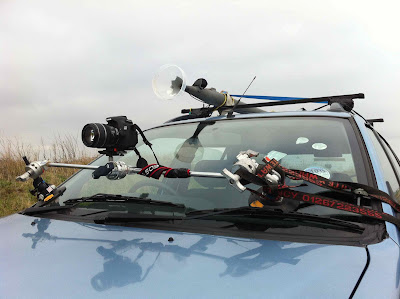Script writing, Editing and Sound Design
Following on from the Rising 5th video piece at Snape Maltings and sound installation at the Lookout tower on
Aldeburgh beach for SNAP earlier this year I have been working on assembling
the footage shot at Jim Cadbury-Brown’s house, 3 Church Walk.
The rough edit of the film stands at 34 minutes and is a tour
through the house as it stood until recently, when its new owner took it over last month. 3 Church Walk is in need of some renovation as it has stood empty
for three years. The damp has taken hold, the window frames rotting and the
garden overgrown. The new owner hopes to restore it to its former condition and
make it livable again. This will involve rewiring, a damp course, clearing the garden
and restoring the kitchen. She intends to keep it as Jim would have wanted it
and at the same time make it her own. It is an exciting new chapter in the
history of this modest but perfect house.
 |
| Jim's chair © Emily Richardson |
Jonathan and I have worked and reworked the script for the
film over the summer and the editing process now involves working out a
relationship between the text and image. There is so much to say about Jim and
Betty’s house, much of which has to remain unsaid, but for the purposes of the
film there are some keys ideas that are contained within these extracts from
the script.
‘“When you enter a building,” Jim said,
“you are starting on an enforced choreography.” The narrow driveway entrance
gathers you up, choreographs your delivery from the outside world, between
screen walls constructed of the same Marks Tey brick as the house, into the
courtyard and garden. Boundary walls enclose the house and plot in this corner,
hiding it from view, forming courtyards, patios and sheltered corners.’
‘“I would say,” Jim wrote in an address on
how architecture enriches life, “that I consider enrichment as the
architectural means whereby a form of organised disorder is introduced into our
background.” “What I am concerned with primarily,” he continues, “is the relation
of ourselves to our background.” Buildings are one expression of order against
their background. For Jim, writing in 1959, in America, the Beats and Action
Painting were symptomatic reactions to the frightening standardisation of
everyday life. The Beats’ particular kind of disorder is a deliberate
cultivation of failure and aimlessness. While in Action Painting the exclusive
emphasis on accident and self-expression are yet further symptoms of the
rejection of responsibility.’
‘“If we seek an accidental spontaneity,” Jim writes, “surely
the natural accident is more acceptable than the contrived one. I prefer to
find my objet trouvé rather than to
have them made, self consciously, for me.” How might architecture achieve the
direct, self-expression of action painting? It can’t: a complete Action
Architecture is a practical impossibility.’
 |
| Exterior/Interior view © Emily Richardson |
‘According to Jim, speaking on the
relationship between order and disorder, movement and rhythm engenders empathy
between man and his surroundings. And architecture would be better described as
the framework of a dance rather than as frozen music. He cites physician and
sexual psychologist Havelock Ellis who wrote in The Dance of Life that “Dancing and building are the two primary
and essential arts.” That “the art of dancing stands at the source of all the
arts that express themselves in the human person. The art of building, or
architecture, is the beginning of all the arts that lie outside the person”.
“If we are indifferent to the art of dancing,” Ellis writes, “we have failed to
understand, not merely the supreme manifestation of physical life, but also the
supreme symbol of spiritual life... The
significance of dancing, in the wide sense, thus lies in the fact that it is
simply an intimate concrete appeal of a general rhythm”. The origin of
architecture is the bird’s nest, which arose as an excess of ecstatic sexual
dance.’
‘How can one adequately photograph the
experience of space when all that is seen are discontinuous portions? “Only a
shadow is caught by the camera,” Jim explained when he introduced Mies Van der
Rohe at the Architectural Association in 1959. Mies’ buildings, for Jim, were a
pure architectural note in a cacophony of propaganda - propaganda generated by
critics, administrators and mediation. “A building is a building and not a
theory, a diagram or a model. As the drawing is the end product of a student’s
work, so the photograph is too often the end in view of many architects and the
only end in view of most architectural magazines. The result is a special form
of graphic design where the contrived viewpoint of the camera is the dominant
factor.” “A building,” Jim says, “is something to be seen, walked in and used.”
Moving image describes movement and light in space. It dances rather than
stultifies into frozen music.’
 |
| Interior view © Emily Richardson |
Another aspect of the film that I have been working on over
the last few months is the sound design. Jonathan and I met with Bill Lloyd (Director of Artistic Development)
at Aldeburgh Music to discuss possible musicians and sound composers whose work
might complement the film. One possible way of approaching the sound design
would be to use the film itself as a score for an improvised piece of music or
sound that uses the materials and objects in the house. Jim and Betty gave careful
attention to the acoustic properties of space In their design. During research
I discovered a conversation supposed to have taken place between Jim and his
friend, the composer Benjamin Britten, in which the latter links the Brutalist
ideal of materials used ‘as found’ with his own interest and use in sound ‘as
found’. I wanted to find a sound composer who could respond to these ideas.
Bill put us in touch with the composer and sound artist Simon
Limbrick. Previously, Simon was artist-in-residence at Aldeburgh Music, a
residency that culminated in a 24 hour performance using paper; Simon’s
performance used recordings of the sounds of paper worked into a composition
with this material alone. This approach
seemed to fit perfectly with ideas that I had for using the recordings of the
materials, surfaces and objects in the house to create a sound composition.
Simon has been recording tests using materials such as glass
and metal and we hope to revisit the house to record elements of the sound
design later this month. The idea is to play the house as if it were an
instrument, much in the same way as Britten played car springs or tea-cups in
pieces such as The
Burning Fiery Furnace and Noye’s Fludde. This sonic dimension to the film
will bring another aspect to the portrait of the house.


























